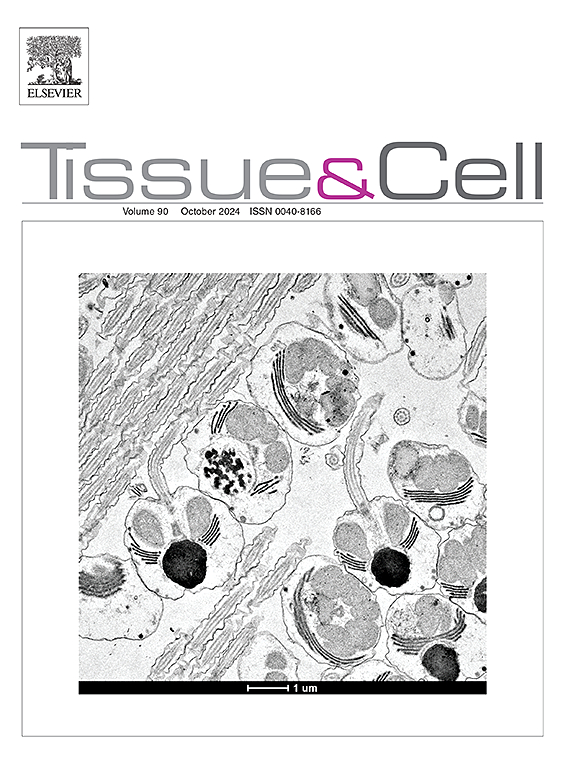The antioxidant and anticonvulsant effects of ellagic acid in kainic acid-induced temporal lobe epilepsy in mice
IF 2.7
4区 生物学
Q1 ANATOMY & MORPHOLOGY
引用次数: 0
Abstract
Oxidative stress (OS) resulting from high levels of free radicals contributes to the initiation and progression of epilepsy. Temporal lobe epilepsy (TLE) is associated with alteration in the structure and function of the hippocampus and is modeled in mice using kainic acid (KA). In this study, the neuroprotective effect of ellagic acid (EA) on KA-induced epilepsy in mice was evaluated. Sixty male Swiss albino mice were assigned to six groups: I received normal saline (NS; 10 ml/kg, intraperitoneally (i.p.)); II, received KA (15 mg/kg, i.p.); III, received diazepam (20 mg/kg, i.p.) and KA (15 mg/kg, i.p.); IV-VI, received EA (10, 20 and 40 mg/kg, i.p.), and KA (15 mg/kg, i.p.). Treatments were done 30 min before KA injection. Seizure (latency, duration, activity) and mortality were monitored for 2 h post-injection. OS was evaluated by measuring MDA, NO, and GSH levels and CAT, SOD, and GPx activities. Levels of TNF-α in the brain tissue were measured. Furthermore, a histological examination of the hippocampus was carried out.
Results
showed that EA pretreatment caused a decline in seizure activity score and duration compared to the KA-treated group. EA pretreatment reduced mortality in KA-treated mice. EA suppressed the generation of MDA and NO; whereas it preserved GSH and the activity of GPx, SOD, and CAT. Additionally, EA exerted anti-inflammatory effects by reducing TNF-α level. Histopathologically, EA reduced KA-induced neuronal damage. EA demonstrated protective effects against KA-related epilepsy and brain damage. Due to its anti-inflammatory and radical scavenging properties, EA may be considered a potential therapeutic option in epilepsy.
求助全文
约1分钟内获得全文
求助全文
来源期刊

Tissue & cell
医学-解剖学与形态学
CiteScore
3.90
自引率
0.00%
发文量
234
期刊介绍:
Tissue and Cell is devoted to original research on the organization of cells, subcellular and extracellular components at all levels, including the grouping and interrelations of cells in tissues and organs. The journal encourages submission of ultrastructural studies that provide novel insights into structure, function and physiology of cells and tissues, in health and disease. Bioengineering and stem cells studies focused on the description of morphological and/or histological data are also welcomed.
Studies investigating the effect of compounds and/or substances on structure of cells and tissues are generally outside the scope of this journal. For consideration, studies should contain a clear rationale on the use of (a) given substance(s), have a compelling morphological and structural focus and present novel incremental findings from previous literature.
 求助内容:
求助内容: 应助结果提醒方式:
应助结果提醒方式:


